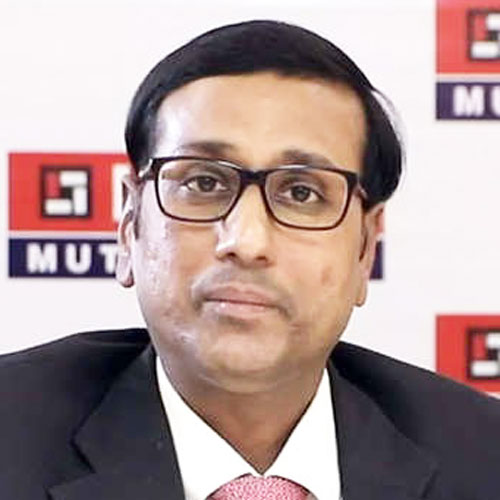Mr. Anupam Joshi
Portfolio Manager and Fund Manager - Fixed Income, HDFC Mutual Fund
1. What is the investment strategy being followed by the HDFC Corporate Bond Fund? How are you selecting the securities?
The fund predominantly invests in AAA and sovereign instruments. The endeavour of the fund is to capture the attractiveness of the spread between Gsec and corporate bonds, on a risk adjusted basis, while not compromising on the credit quality of the portfolio.
Before investing we tend to follow rule of SLR – safety, liquidity and returns, generally prioritized in that order. Security selection is done based on the credit assessment framework which inter-alia includes industry, company and financial analysis, parentage, management quality, etc. Further, we have our internal credit risk assessment model which is used to determine the exposure limits on each issuer and group.
2. India's external debt saw a marginal rise to USD 624.7 billion by the end of March 2023, accompanied by a decline in the debt-to-GDP ratio. How will it impact the interest rates hereafter? What are the considerations that investors can keep in mind?
Most of the external debt in India is taken by corporates whereas government exposure to foreign currency denominated debt is very limited. Further, FPI holding in Indian sovereign securities remains low (<2% of the overall outstanding debt). Since large part of India debt is locally funded, the impact on the interest rates are more likely to follow domestic macro-economic variables, till the time current account and foreign exchange reserves remains at comfortable levels.
Given India’s stable to improving macros as well as strong external sector position, we believe that RBI can maintain its focus on domestic growth inflation dynamics rather than overly worry about DM central bank actions. Our base case view is that of a prolonged pause on interest rates by RBI. INR on REER basis (Real effective exchange rate) remains in undervalued territory and thus, depreciation from here on appears unlikely. Overall, given the declining inflation (looking through the spike in vegetable prices), already done rate hikes, comfortable domestic liquidity -makes India a very attractive investment destination. Hence, from a investment perspective, these conditions should augur well for shorter to medium end of the yield curve on a risk adjusted basis and one may consider increasing debt allocation from a medium term perspective.
3. How do you anticipate the flows into debt funds over the next few months?
Considering debt mutual fund schemes offer a good liquidity profile to the investors with minimal impact costs, we expect business as usual for majority of debt mutual fund schemes. This hypothesis is also corroborated with visible improvement in the flows to debt schemes in Q1FY24, first quarter post the withdrawal of indexation benefits from the debt schemes. We have often seen that if compared on a like to like basis, debt Mutual Fund schemes’ s portfolio YTMs are generally at par or better than any other alternative investment opportunities without any compromise on the credit quality.
4. Large investors seem to be taking more interest in T-bills instead of long-term bonds as there is no clarity on the interest rate cycle. What is your take on upcoming interest rates with this regard? Where are your positions standing currently?
Over the past few years, AUM of the large long term investors like PF / Pension funds and Insurance has increased significantly. The aggregate holding in Government securities of all the above has increased and is now higher than Banks holding. Given the long term nature of flow to these investors, the bonds at the longer end have seen significant stability in past few years. As growth moderates and inflation trends lower, we expect the longer tenure performing well due to capital appreciation, apart from higher accruals over the medium term.
In the near future, we expect interest rates to trade within a narrow range with a downward bias. The above is in view of expectation of prolonged pause from RBI, moderating growth and slowing inflation, DM central banks being closer to peak and relatively balanced SLR demand-supply. Investors, on the basis of their individual risk appetite, can consider locking current prevailing yields in a phased manner or else they might be exposed to reinvestment risk. Hence, we are recommending investors to lock in for longer.
5. RBI expects CPI inflation at 5.1 per cent for 2023-24 (Q1 at 4.6%, Q2 at 5.2%, Q3 at 5.4% and Q4 at 5.2%. Are you in line with these expectations and why? Kindly brief.
Before the spike in vegetable prices, we were largely in agreement with RBI estimates. However, the sharp rise in veggies prices, we believe that Inflation in the near term can significantly overshoot RBI’s estimate in Q2 and thus, RBI estimates for whole year are likely to be marginally revised upwards.

#For latest riskometer, investors may refer to the Monthly Portfolios disclosed on the website of the Fund viz. www.hdfcfund.com

DISCLAIMER: Views expressed are of Mr. Anupam Joshi, Fund Manager - Fixed Income, of HDFC Asset Management Company Limited as of 25th July 2023. The current investment strategies are subject to change. The Fund/ HDFC AMC is not indicating or guaranteeing returns on any investments. Readers should seek professional advice before taking any investment related decisions.
MUTUAL FUND INVESTMENTS ARE SUBJECT TO MARKET RISKS, READ ALL SCHEME RELATED DOCUMENTS CAREFULLY.





